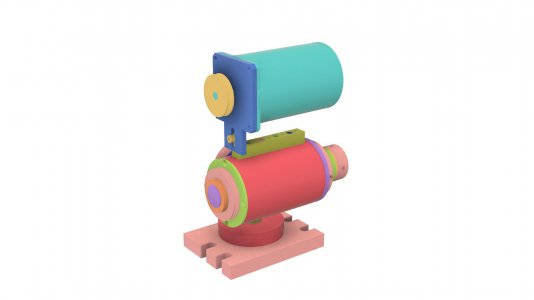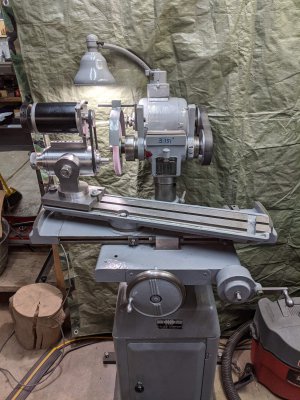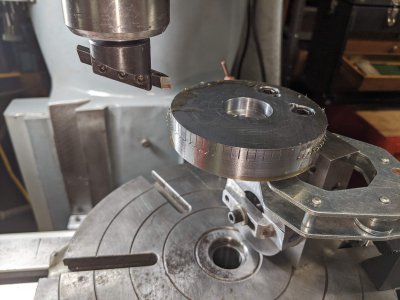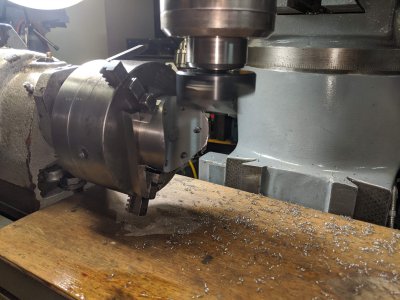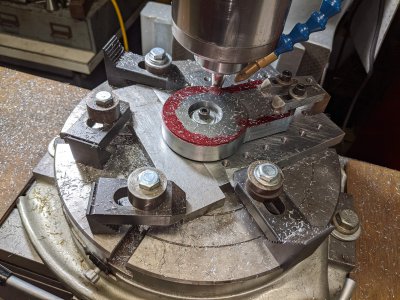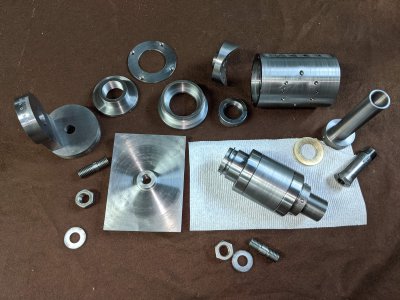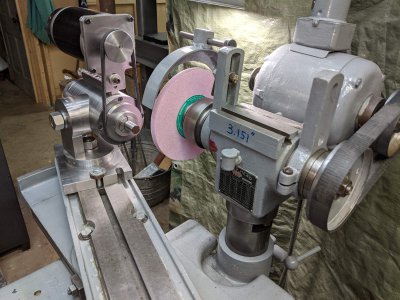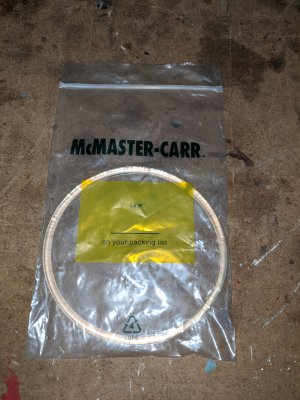- Joined
- Nov 5, 2016
- Messages
- 1,419
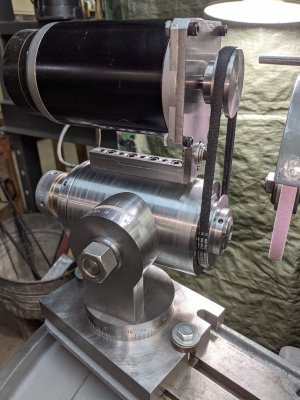
Just thought I'd share what I've been up to lately. I designed/built a spinning head for my grinders. One goal was to use materials I had on hand and that lead to some design limitations, but, after multiple design approaches, I came up with a solution.
For the bearings I used a pair of replaced spindle bearings out of a Bridgeport head. These were given to me a while back and although used/replaced they felt and looked fine to me and since I'm only going to be running at probably 350 RPM max and light duty at that I figured they were worth a shot. They are working fine and sure beat spending hundreds of dollars for new ones!
I made the spindle from a piece of B7 bolt material I had on hand which is 4140/42 prehardened (similar to 4140 prehardened). I feel this material will work fine for my use.
Collet wise, although I would have liked 5C, the bearings have too small of a bore for these so I went with my 4C collets. R8 would seem to make sense, but they have no through hole... I'm currently drawing up a 4C mount for a 3" four jaw chuck as well.
After assembly, the bore in the spindle runs within 0.0003" TIR. I'm very happy with this; it could have been a lot worse with all the machining/assembly variables involved. The right thing to do is to grind the spindle bore in on its' own bearings and I may do that, but I'm going to use it for a while and see how things go. My collets, although good brand names, are old/used and don't run perfectly true anyways. I test ground a piece of mild steel and could not detect any out of round condition at all.
The motor is a Parker Hannifin Compumotor stepper and drive. Way over kill for this application, but the only thing I had on hand that was around the right size, power and also has programmable speed control. This made pulley sizing completely irrelevant.
I didn't want to add any additional stresses so instead of welding I used screws and dowel pins for assembly. The only components I had to purchase were oil seals (not to keep oil in since I greased the open bearings, but to keep grinding dust out), the belt (2L V belt) and some fine thread hex head cap screws.
With the threaded top rail and locking flange nut assembly on the rear I left things open to add an 24 position indexing plate and lock pin for indexing, which I'll be designing soon.
Works great!
Ted
